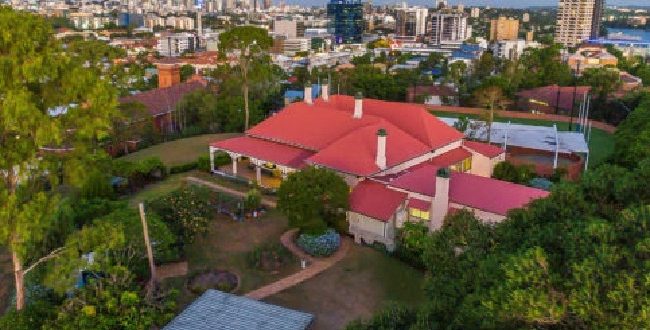When Brisbane engineer and architect Charles Lambert Depree built his homestead Goldicott in 1885, it was not only an innovative technical achievement but a glorious, stately house looking out across the early settlement.
Mr Depree’s suburban Toowong home was the first in Brisbane — and possibly Queensland — to use poured concrete, which was at that stage the cutting edge of building.
But as the city of Brisbane has risen and developed around it, Goldicott has remained standing as a prime example of turn-of-the-19th-century architecture, design and landscaping.
Now, 132 years after it was built, the homestead and its impressive 12,340sq m of landholding is available to a new owner for only the second time in its long history.
Place principal Andrew Degn declined to comment on the sale of the property, which is open for expressions of interest until April 13.
Separately, industry insiders said the property had attracted strong interest and could sell for up to $7 million.
According to the Brisbane City Council heritage unit, the Sisters of Mercy have owned the homestead, for use as the Mount St Mary’s Convent, since 1902.
It is registered in Queensland’s Heritage Register for its significance as a “very rare experiment in concrete housing”.
“The concrete construction was innovative and remarkable for its time,” the citation said.
“Mount St Mary’s Convent (Goldicott) has retained a considerable proportion of its original grounds, which allow the house to remain remote in the midst of extensive development. This is a rare example of an 1880s house in Toowong which has retained substantial grounds and outlook.”
An article in The Brisbane Courier in 1885 described the house as “a substantial residence” of 50 feet by 50 feet, with 10-foot wraparound verandas and 15-foot ceilings.
Over time the building was added to, with a dormitory hall for boarders at the nearly school, a music room was developed and sloping land levelled for sports grounds.
In the early 1990s the property was refurbished and a full-length, handpainted mural was rediscovered in the entrance hall. The house was added to the heritage register in 1992.
Reader comments on this site are moderated before publication to promote lively and civil debate. We encourage your comments but submitting one does not guarantee publication. We publish hundreds of comments daily, and if a comment is rejected it is likely because it does not meet with our comment guidelines, which you can read here. No correspondence will be entered into if a comment is declined.





